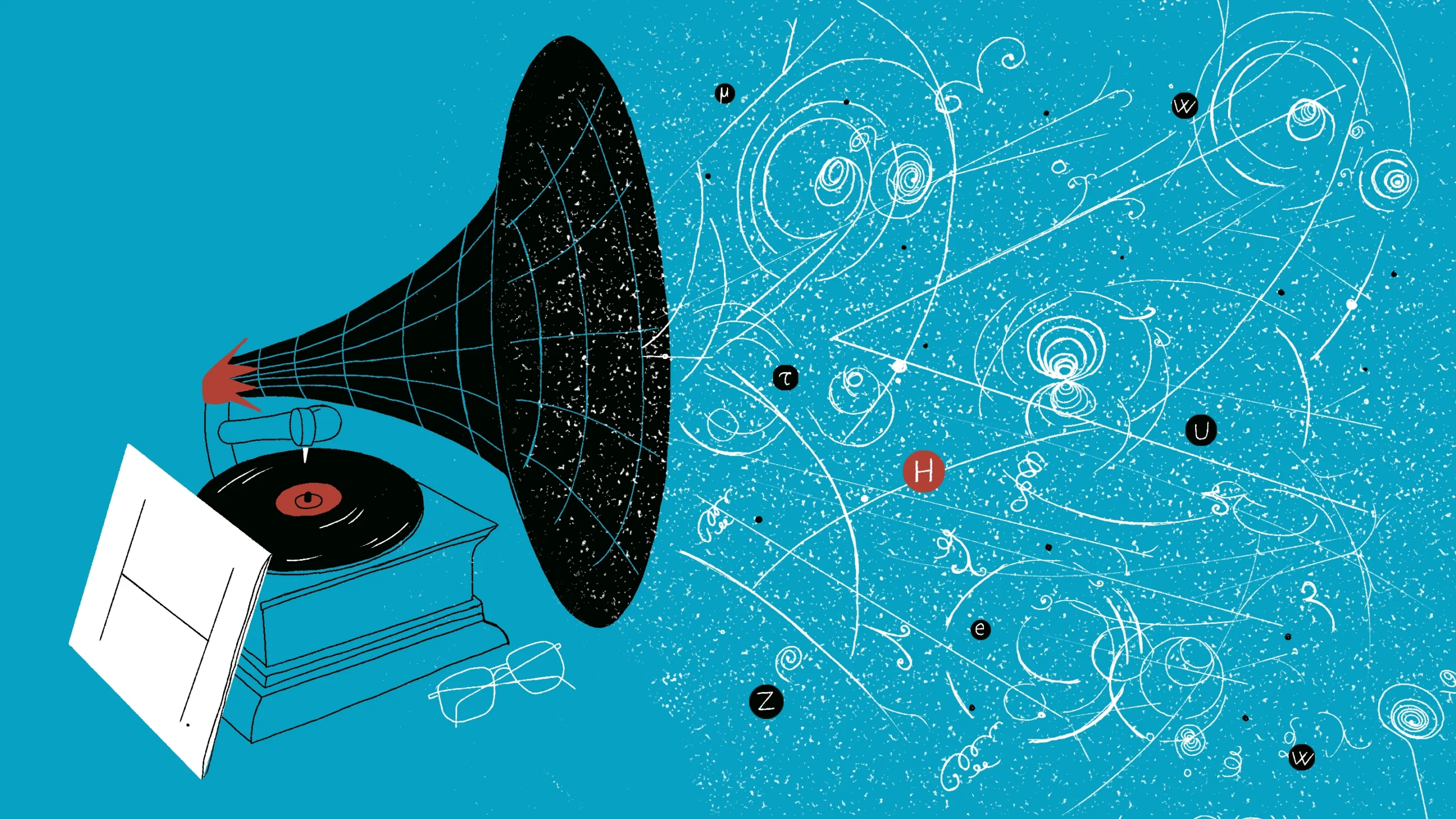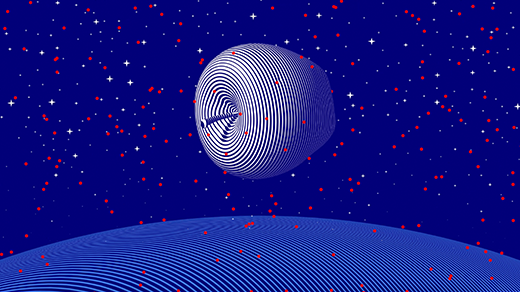How the Higgs Field (Actually) Gives Mass to Elementary Particles

Michele Sclafani for Quanta Magazine
Introduction
The discovery of the Higgs boson at the Large Hadron Collider in 2012 confirmed what we particle physicists had long suspected: that there is a field permeating the cosmos that generates the masses of elementary particles. Unfortunately, physicists have found it challenging to explain to everyone else how this so-called Higgs field accomplishes its mighty task.
A common approach has been to tell a tall tale. Here’s one version:
There’s this substance, like a soup, that fills the universe; that’s the Higgs field. As particles move through it, the soup slows them down, and that’s how particles get mass.
Other versions portray the Higgs field as akin to molasses, a thicket, a crowd of people or an expanse of snow.
However, all such stories conflict with what we physicists teach in the very first weeks of first-year university courses. By suggesting that the Higgs field creates mass by exerting drag, they violate both Newton’s first and second laws of motion. Among other disasters, this drag would long ago have caused the Earth to spiral into the Sun. Moreover, if the Higgs field were really a substance, it would provide a point of comparison against which we could measure our absolute motion, violating both Galileo’s and Einstein’s principles of relativity.
In truth, the Higgs field has nothing to do with motion or slowing. Instead, its story is all about vibration.
Quantum field theory, the powerful framework of modern particle physics, says the universe is filled with fields. Examples include the electromagnetic field, the gravitational field and the Higgs field itself. For each field, there’s a corresponding type of particle, best understood as a little ripple in that field. The electromagnetic field’s ripples are light waves, and its gentlest ripples are the particles of light, which we call photons. Similarly, electrons are ripples in the electron field, and the Higgs boson is a minimal ripple in the Higgs field.
A stationary electron, much like the vibration of a guitar string, is a standing wave that vibrates with a preferred frequency, known as its resonant frequency. Such resonant vibration is common and familiar. Because a plucked guitar string consistently rings at its resonant frequency, it always makes the same tone. Likewise, the fixed frequency of a swinging pendulum is what makes it an effective clock. On the same principle, every stationary electron vibrates with the resonant frequency of the electron field.
Most of the universe’s fields have resonant frequencies. In a sense, the cosmos loosely resembles a musical instrument; both have characteristic frequencies at which they most readily vibrate.
For me personally, the fact that resonance lies at the foundation of reality is a source of delight and amazement. As a lifelong amateur musician and composer, I’ve long understood the inner workings of pianos, clarinets and guitars. But I was completely astonished to learn, back when I was a graduate student, that the structures of the universe, even within my own body, operate on similar principles.
Yet this secret musicality of our cosmos would be impossible were it not for the Higgs field.
In quantum field theory, a combination of quantum physics and Einstein’s relativity leads to a crucial relationship between a resonant frequency and the mass of an elementary particle: The more rapidly a stationary particle vibrates, the greater its mass. Fields lacking a resonant frequency correspond to particles that have no mass; such particles, including the photons of the electromagnetic field, can never be stationary.
While the Higgs tall tales suggest that mass arises from the slowing of elementary particles by a molasses-like substance, the truth is that a stronger Higgs field makes the elementary particles vibrate at higher frequencies, thus raising their masses. One might therefore view the Higgs field as a sort of cosmic stiffening agent, whose role is to increase the resonant frequencies of other fields.
How is it possible for one field to change the frequency of another? The humble pendulum gives us a simple example.
Imagine placing a ball at the end of a string out in deep space, where the gravitational field is essentially zero. The ball will float aimlessly. If you give it a little push, its position may slowly drift, but it won’t vibrate.
However, if you put the makeshift pendulum in a nonzero gravitational field, everything changes. The ball hangs straight down and, if disturbed, will swing.
Mark Belan for Quanta Magazine
When stationary, the ball is said to be in equilibrium — stable, balanced and with no reason to move. If the ball is displaced to the right, gravity will cause it to swing back to the left, and vice versa. The tendency of the ball’s position to return to the point of equilibrium, known as a restoring effect, is what causes it to swing.
Here the gravitational field acts as a stiffening agent: It stiffens the pendulum, thereby giving it a nonzero resonant frequency. The stronger the gravitational field, the more powerful the restoring effect and the higher the pendulum’s resonant frequency.
Analogously, the Higgs field creates a restoring effect on other elementary fields that changes the way they vibrate. Although any field can have traveling ripples like those that cross a pond, a restoring effect allows a field to have stationary ripples, the standing waves that resemble those on a guitar string. As I mentioned earlier, these standing waves are nothing more nor less than motionless elementary particles, rippling in their respective fields.
This notion lies at the heart of what the late British physicist Peter Higgs, namesake of the Higgs field, and his competitors pointed out in the 1960s: that one field can stiffen other fields, thereby permitting their ripples to vibrate in place with a resonant frequency, and thus giving their particles mass. Experimental studies of the Higgs boson at the Large Hadron Collider confirm that this is indeed what the Higgs field does. By using the mathematics of the Standard Model of particle physics — the quantum field theory describing all the known elementary particles and the interactions among the universe’s fields — scientists make predictions for the Higgs boson’s behavior that precisely match experiments. There is no doubt: The Higgs field creates a restoring effect on many other fields.
So with this deeper understanding of the Higgs field, let me suggest a different tale:
Once upon a time, there came into being a universe. Searingly hot, it swarmed with elementary particles. Among its fields was a Higgs field, initially switched off. But as the universe expanded and cooled, the Higgs field suddenly switched on, developing a nonzero strength. When this happened, many fields became stiff, and as a result their particles acquired resonant frequencies and mass. That’s how the universe was transformed, through the influence of the Higgs field, into the quantum musical instrument it is today.



